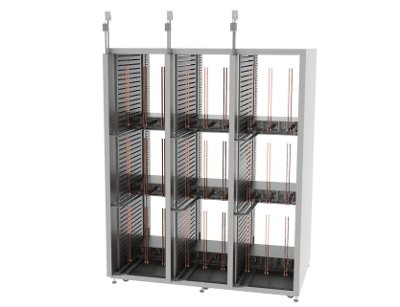The Open Compute Project, a data center hardware and infrastructure design open-source community, is working to merge custom rack designs that came out of Facebook with similar designs developed for Baidu, a leading Chinese internet company whose services are comparable to Google.
Facebook and Tencent – a company that has been working with Baidu on the rack – announced convergence of the projects Wednesday at the Open Compute Summit, hosted by Rackspace at its San Antonio, Texas, headquarters.
Open Compute released the first set of rack specifications in December 2011. Open Rack and Baidu’s specifications are expected to be completely merged in 2013.
Both HP and Dell have announced new server and storage designs compatible with the open-source rack specs.
Read in detail about HP's custom-designed Coyote servers for Facebook
Frank Frankovsky, director of hardware design and supply chain at Facebook and founding board member of the Open Compute Project, said Facebook’s idea behind the project was to create for the first time a data center-specific standard for data center racks.
The problem has been that historically, data center rack manufacturers have been basing designs on an old standard originally intended for railroad-switch equipment. “Because we followed that standard for so long … we have what I call, ‘racks gone bad’,” Frankovsky said.
Facebook’s Giovanni Coglitore wrote in a blog post that the original standard was written in the 1950s and standardized only the width between the inner rails of a rack, leaving other specs up to the manufacturers.
“This resulted in gratuitous differentiation in server and rack designs, locking consumers into specific vendors and their implementations,” he wrote.
The rack includes a cable-less power distribution system, which rids servers of the need to have their own power supplies. Servers in this rack plug straight into bus bars at the back of the rack. The bus bars connect to power shelves within each rack, where two PDUs supply both AC and DC power.
The Open Rack (name of the Open Compute standard) was designed with scale-compute as a core consideration. It is 48mm high – higher than the traditional height of 44.5mm – to improve airflow, air economization, better cable and thermal management, as well as space utilization.
The standard includes a wider-than-usual IT equipment space – 21 inches, compared to the traditional 19 inches. This is to allow for things like three-motherboard or five-disk-drive deployments side-by-side in one chassis.
The rack’s outer width was kept at the traditional 24 inches to accommodate standard floor-tile sizes.

